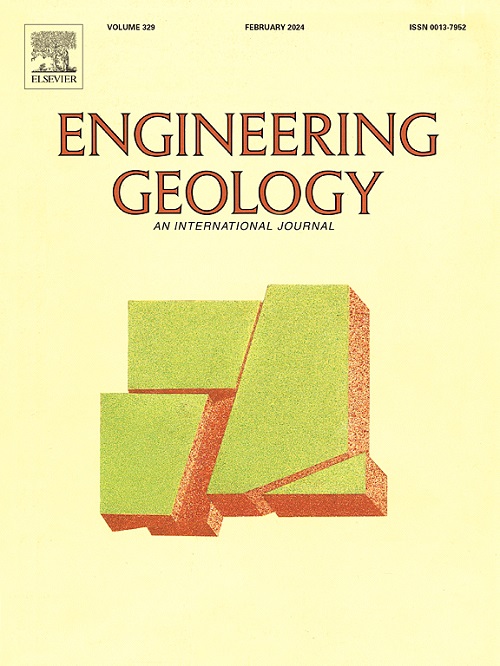Role of initial particle deposition in collapse dynamics and deposition morphology of submarine granular flows using CFD-DEM coupling method
IF 6.9
1区 工程技术
Q1 ENGINEERING, GEOLOGICAL
引用次数: 0
Abstract
Submarine landslides represent a significant marine geohazard, making it essential to understand their underlying dynamics. Initial deposition plays a crucial role in determining the flow behavior and ultimate runout distance of submarine granular materials. Despite the importance of particle interactions, especially considering the wide range of particle sizes involved, their impact on submarine landslide dynamics has not been thoroughly explored. In this study, we employ a three-dimensional coupled CFD-DEM method to simulate the collapse of granular columns under varying initial deposition conditions, aiming to uncover the dynamic characteristics of submarine landslides at the particle scale. Our findings reveal that initial depositions with a higher concentration of larger particles at the top lead to their upward migration toward the upper and frontal regions of the flow, while smaller particles tend to settle at the base. This enhances the overall mobility of the landslide. Notably, initial depositions with larger aspect ratios result in greater particle segregation and more efficient conversion of initial potential energy into vertical kinetic energy. This segregation extends the range of kinetic energy variation, reduces energy dissipation through horizontal velocity, and ultimately increases the runout distance. Moreover, the presence of an ambient fluid significantly prolongs the duration of movement compared to dry cases, although it results in a shorter final runout distance. These insights provide a deeper understanding of the mechanics governing submarine landslides and highlight the critical role of initial deposition conditions in shaping their behavior.
求助全文
约1分钟内获得全文
求助全文
来源期刊

Engineering Geology
地学-地球科学综合
CiteScore
13.70
自引率
12.20%
发文量
327
审稿时长
5.6 months
期刊介绍:
Engineering Geology, an international interdisciplinary journal, serves as a bridge between earth sciences and engineering, focusing on geological and geotechnical engineering. It welcomes studies with relevance to engineering, environmental concerns, and safety, catering to engineering geologists with backgrounds in geology or civil/mining engineering. Topics include applied geomorphology, structural geology, geophysics, geochemistry, environmental geology, hydrogeology, land use planning, natural hazards, remote sensing, soil and rock mechanics, and applied geotechnical engineering. The journal provides a platform for research at the intersection of geology and engineering disciplines.
 求助内容:
求助内容: 应助结果提醒方式:
应助结果提醒方式:


